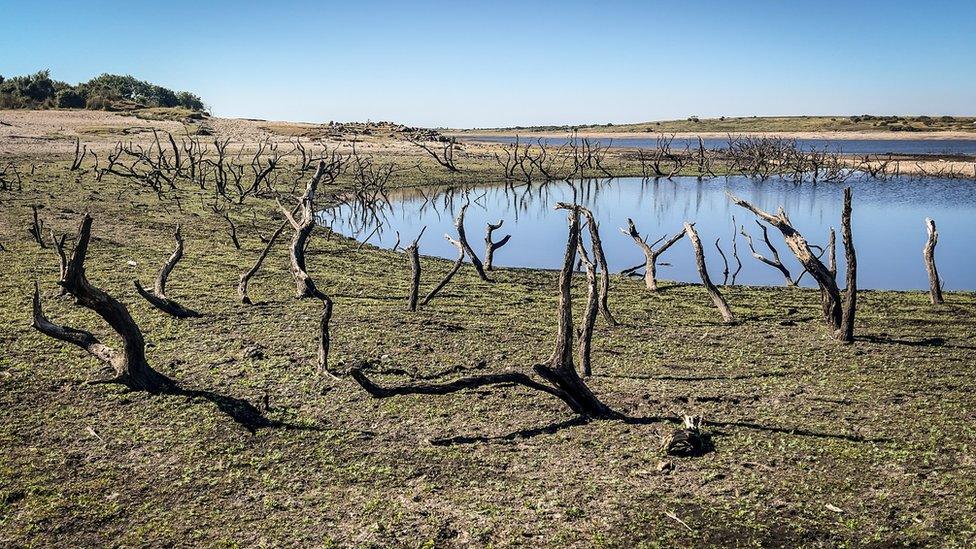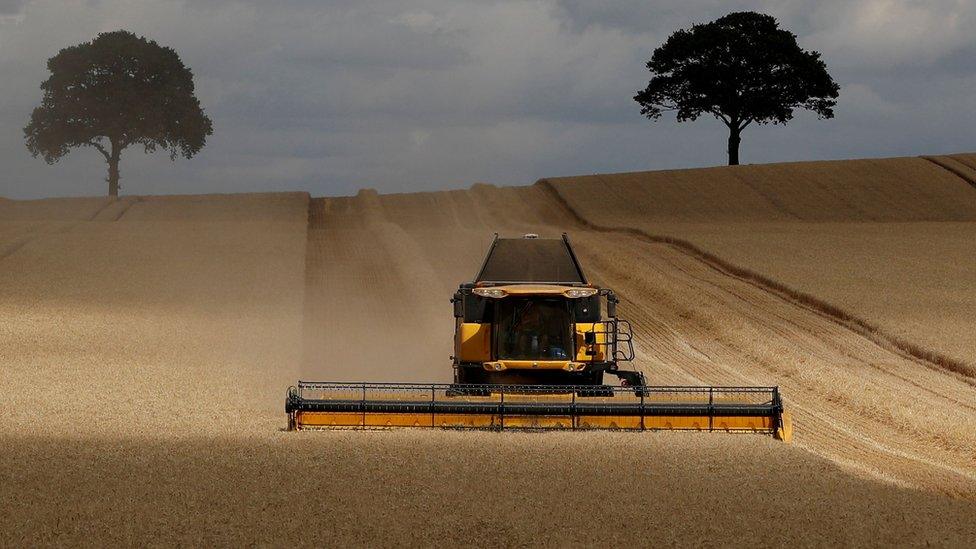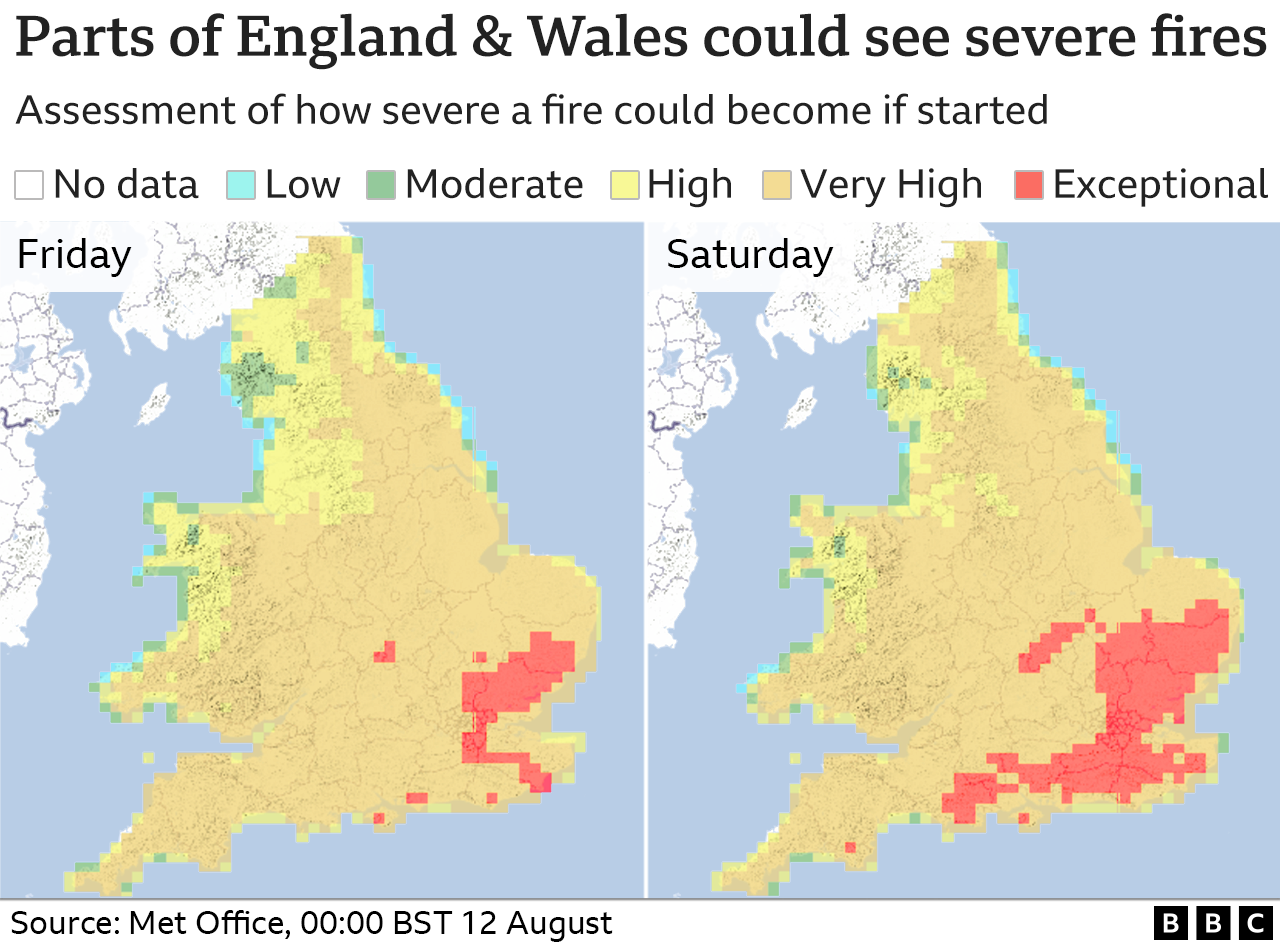Where has a drought been declared, and what does it mean?
- Published

Millions of people are living in areas hit by drought, following one of the driest summers on record.
Hosepipe bans are in place and households and businesses are being asked to use water wisely.
Where are the drought areas?
The Environment Agency declared a drought for all of the South West of England.
Along with a large part of South-west Wales, 11 of the 14 Environment Agency areas of England are now in drought, external:
Devon and Cornwall
East Anglia
East Midlands
Herts and North London
Kent and South London
Lincolnshire and Northamptonshire
Solent and South Downs
Thames
Wessex
West Midlands
Yorkshire

Separately, Northern Ireland Water has asked the UK government to put drought order measures in place., external
The Scottish Environment Protection Agency temporarily banned farmers in parts of Fife from using water from the River Eden on their fields.
What is a drought?
The Environment Agency (EA) decides whether to declare a drought after speaking to water companies, government officials and groups including famers' representatives.
It considers rainfall, river flows, groundwater levels, reservoir levels, and the dryness of soils.
This year has seen five consecutive months of below average rainfall across all regions in England and above average temperatures.
According to the EA, river flows, groundwater levels and reservoir stocks all decreased during July. Some river levels are the lowest ever recorded, external.

What happens when a drought is declared?
Declaring a drought in a specific area does not oblige water companies to restrict water use.
However, it means they put into operation pre-arranged drought plans, which may include temporary use bans on things like hosepipes and lawn sprinklers.
Hosepipe bans are now in place across much of England and part of Wales.

Other possible options include:
taking more water than usual from rivers
using desalination plants, such as the one in London
cutting non-essential use of water beyond hosepipe bans
The Environment Agency is also urging water companies to act to reduce leakage from pipes as quickly as possible.
Why are there droughts this year?
In the first three months of the year, England's rainfall was down 26% while in Wales it was down 22%.
This meant that even before the summer had started, average river flows, external were "below normal" or "exceptionally low".

In July, rainfall was a quarter of the normal level, external.
Overuse of water has made the situation worse. The government says over a quarter of the UK's underground water sources have too much water taken from them, external.
What problems do droughts cause?
The effects of drought, external can include:
water polluted and fish killed
crop failure
wildfires
Berry farmers have reported losing some of their crop.
Vegetables such as potatoes are at particular risk because of their high-water content.
Farmers are delay planting crops for next year such as rapeseed because of the dry soil.
Sheep and lambs are suffering from undernourishment.

The price of barley and wheat increased four fold during the 2018 heatwave as crops failed
There have been multiple fires, with significant damage to homes and grasslands.
London Fire Brigade dealt with 340 grassland fires in the first week of August - eight times as many as they had to deal with in the same week last year.
Because of the high risk of wildfires, some shops removed disposable barbecues from shelves.

In Surrey and Yorkshire, the Environment Agency has had to move fish from rivers which are drying up to and deeper and cooler waters.
What happened in the 1976 and 2018 droughts?
In 1976 and 2018 the UK had severe droughts lasting months, caused by dry springs and very hot summers.
The government took emergency powers under the 1976 Drought Act to turn off domestic and industrial water supplies.
In 2018, the drought led to crop failures, which raised food prices. Multiple water restrictions were imposed.
Could we see more droughts in the future?
The National Infrastructure Commission - which advises the UK government - says there could be more droughts in future, external because of population growth and climate change.
It has called for people to use less water and for water companies to let less of it leak away.
It's thought up to three billion litres of water are lost in the UK every day.